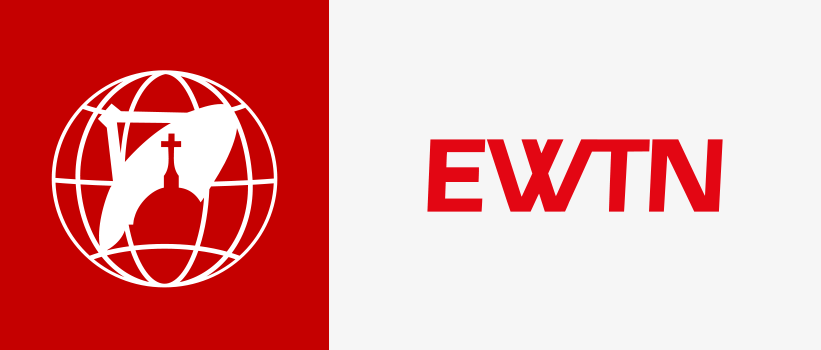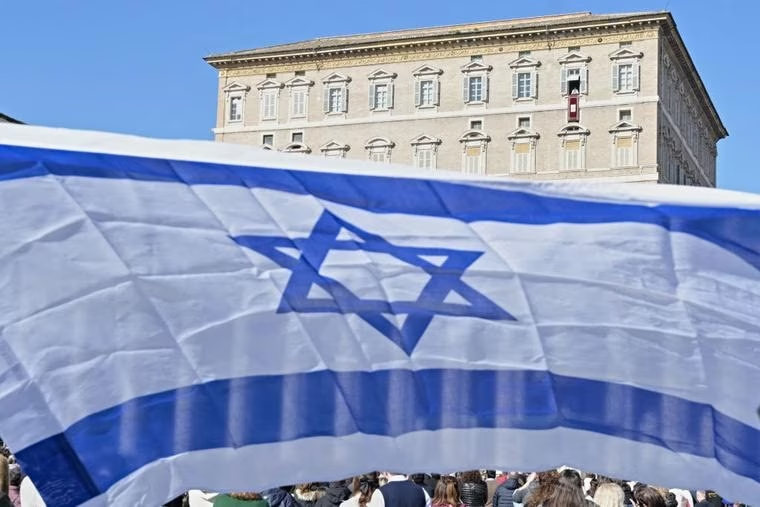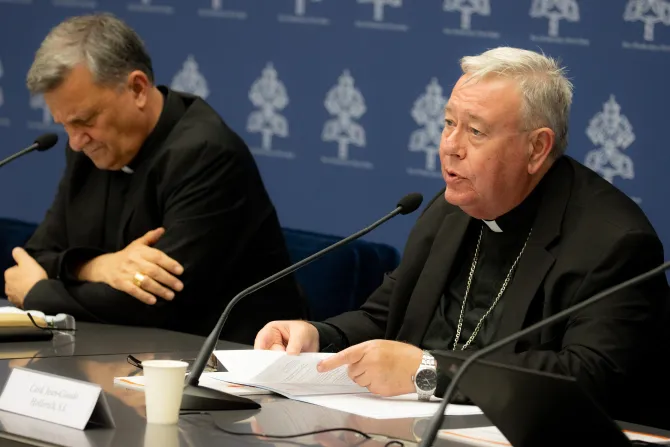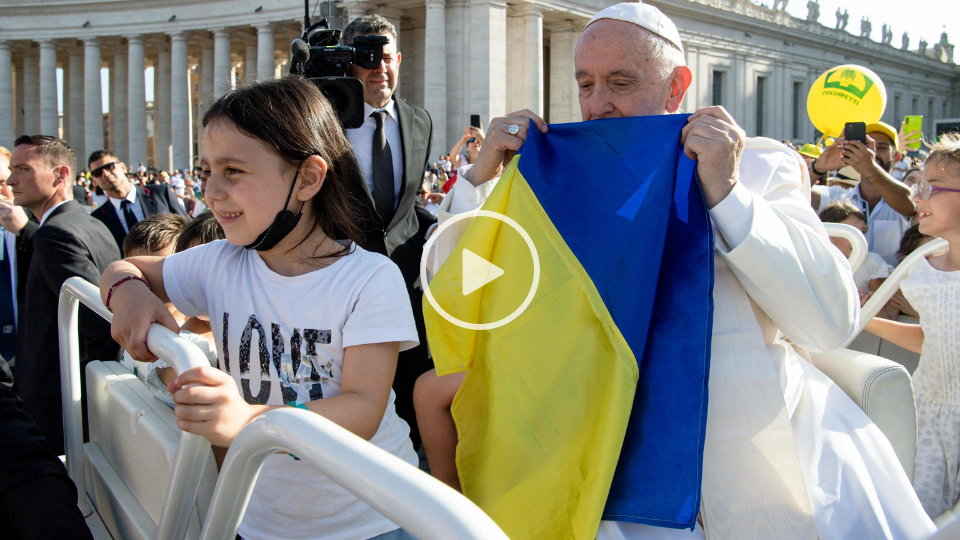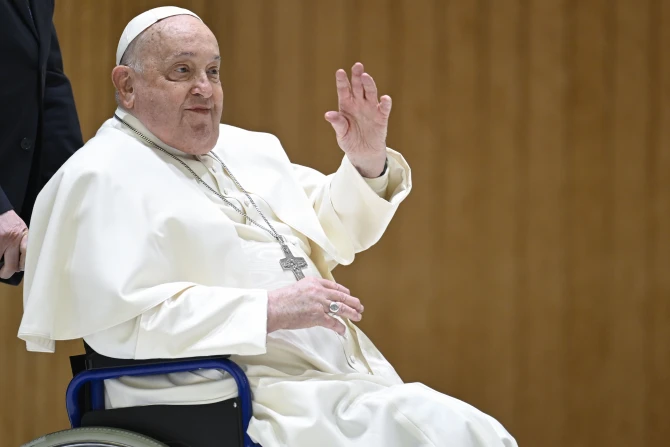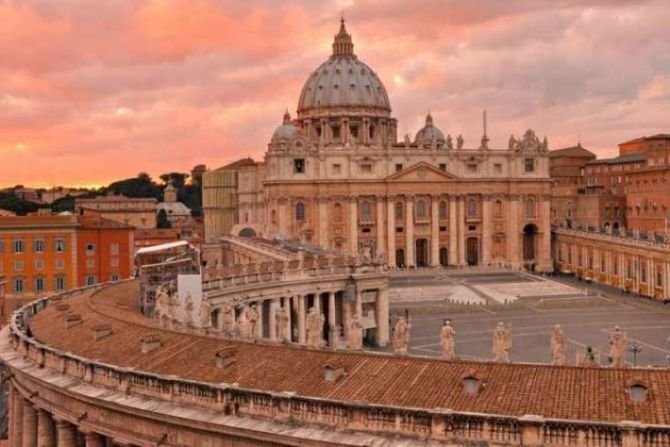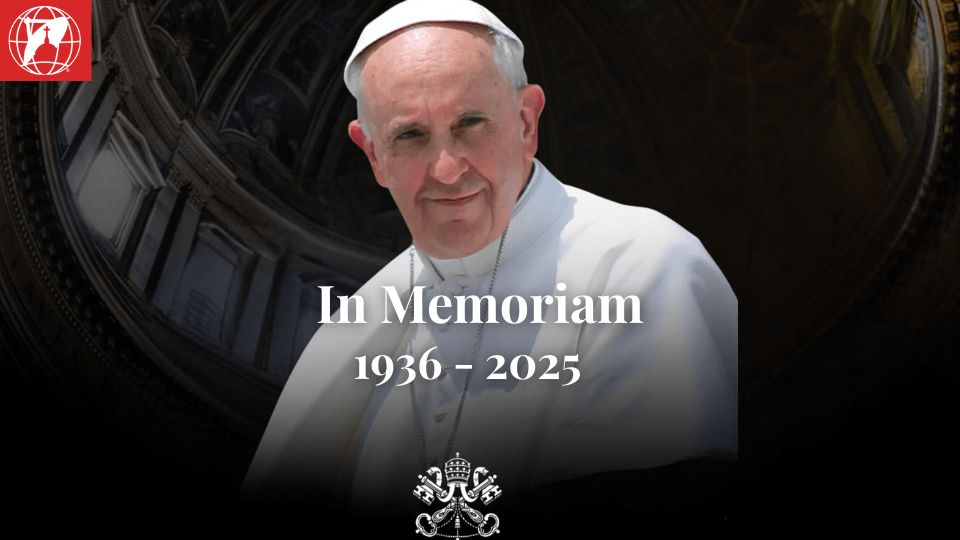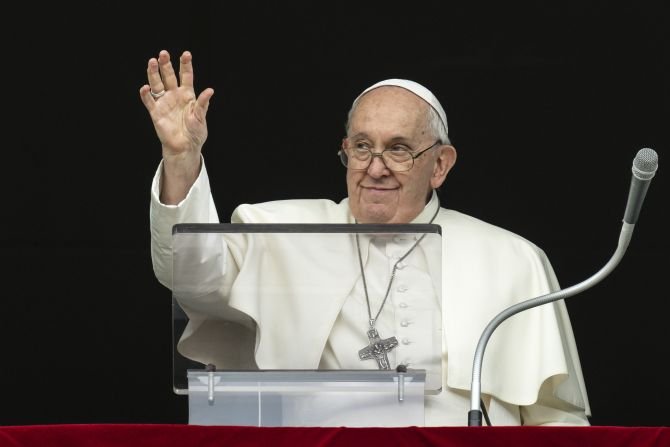The most recent appeal represents continuity with his predecessors, especially Pope St. John Paul II, who was anything but reticent in expressing his sympathy toward the Palestinian cause.
As the war in Gaza passed the six-month mark with no sign of abatement amid escalating Middle East tensions, Pope Francis continues to stand center stage in calling for an immediate cease-fire and deploring the carnage of the conflict, which has reportedly left more than 33,000 Palestinian civilians dead.
On Sunday in St. Peter’s Square, Pope Francis addressed Iran’s missile attack Saturday against Israel.
“I follow in prayer and with concern, even pain, the news that has arrived in the last few hours on the worsening of the situation in Israel due to the intervention by Iran,” the Pope said.
“I make a heartfelt appeal to stop any action that could fuel a spiral of violence with the risk of dragging the Middle East into an even greater conflict of war. No one should threaten the existence of others,” he added.
On Saturday evening, Iran launched more than 300 drones and missiles on military targets in Israel in retaliation for an Israeli attack on the Iranian Embassy in Syria’s capital of Damascus on April 1, which killed seven.
On Sunday, Pope Francis also renewed his exhortation for peace as the Israel-Hamas war continues unabated, calling for “the Israelis and Palestinians to live in two states, side by side, in security; it is their deep and legitimate desire, and it is their right.”
During the general audience on April 3, Pope Francis expressed his “deep regret” over the killing of seven humanitarian aid workers by an Israeli airstrike, an event that received near-universal condemnation by the international community.
Pope Francis made his first public appeal for a cease-fire during the Oct. 29 Angelus. Several days later, in an interview with Italian national broadcaster RAI, the Pope reiterated the moral imperative for a cease-fire. But Francis also stressed that a two-state solution is not only a “wise solution,” but a critical underpinning for lasting peace.
The Vatican’s diplomatic position has evolved over the years, following the contours of a conflict that cuts across civilizations. But Pope Francis, in calling for a two-state solution, represents continuity with his predecessors, especially Pope John Paul II, who was anything but reticent in expressing his sympathy toward the Palestinian cause. Meeting with former Palestine Liberation Organization (PLO) leader Yasser Arafat on 10 separate occasions throughout his pontificate, John Paul II was proactive in moving towards an eventual recognition of a Palestinian state, while simultaneously opening official bilateral relations with the state of Israel.
The Roots of Vatican-Israeli Diplomacy
In 1947, the Vatican signaled its support for United Nations Resolution 181, the planned partition of Palestine into two distinct states, and the conferral of a special status on Jerusalem as a corpus separatum (separate entity). On May 14, 1948, following the termination of the “British Mandate” over Palestine and the proclamation of an independent Jewish state, the First Arab-Israeli War erupted — the aftershocks of which are still felt today.
Amid the political turmoil and social unrest, Pope Pius XII, in his 1948 encyclical In Multiplicibus Curis, reiterated the Vatican’s support for the partition, writing that it is “opportune to give Jerusalem and its outskirts … an international character.” He repeated this call a year later in Redemptoris Nostri Cruciatus, calling for a “juridical status” for Jerusalem “and its surroundings.”
Pope St. Paul VI, the first pontiff to visit the Holy Land, took this call further.
“Even if we are well aware of the tragedies not so long ago which have compelled the Jewish people to seek a secure and protected garrison in a sovereign and independent state of their own,” he said during his Christmas message in 1975, “and because we are aware of this, we would like to invite the children of this people to recognize the rights and legitimate aspirations of another people which have also suffered for a long time, the people of Palestine.”
St. John Paul II and Palestine
It was not until the pontificate of Pope John Paul II — which marked a pivotal moment in the internalization of the papacy, with the number of countries recognizing the Holy See growing from 85 to 174 — that there were major diplomatic rapprochements in the Holy Land.
In 1993, the same year Israel and the PLO recognized each other, the Holy See and Israel signed the “Fundamental Agreement,” a concordat that concerned the taxation of churches, pilgrimage rights, the operation of Catholic schools, and the so-called “status quo.” This was followed by the opening of the Vatican Nunciature in Israel and an Israeli Embassy in Rome on Jan. 19, 1994.
In line with the provisions of the FundamentalAgreement, the Bilateral Permanent Working Commission was created in July to work towards the implementation of the “Legal Personality Agreement,” over a three-year period, focused on the Church’s legal status and certain institutional financial exemptions. Marshall Breger, a professor of law at The Catholic University of America Columbus School of Law, observed that the agreement was of fundamental importance “to normalize the status and legal personality of the Catholic Church and its institutions,” whereby they would be “accorded legal status under Israeli law.” While ratified by the Holy See and Israel in 1997, it was not passed by the Knesset into Israelidomestic law and remains an outstanding issue.
The Vatican was holding contemporaneous negotiations with the PLO. On Oct. 26, 1994, the two parties established official relations. Then, in 2000, the Vatican signed the “Basic Agreement” with the PLO, aimed at securing the rights of the Catholic Church in a future Palestinian state.
The Basic Agreement also called for a “peaceful solution of the Palestinian-Israeli conflict, which would realize the inalienable national legitimate rights and aspirations of the Palestinian People” and “an equitable solution for the issue of Jerusalem, based on international resolutions.” The Israeli government responded by expressing its “great displeasure.”
For the Vatican, this was a major step not only in seeking protection for ecclesial activity and property in a “future” Palestinian territory, but in laying the practical groundwork for recognizing Palestinian statehood — which came in 2013, a year following a November 2012 vote by the U.N. General Assembly, which granted Palestine “Non-Member Observer State” status.
Diplomacy Under Pope Francis
The Vatican’s final step in recognizing a Palestinian state came in 2015, with the signing of the historic “Comprehensive Agreement.” This accord concerned “the essential aspects of the life and activity of the Catholic Church in Palestine,” but expressly stated that “in contrast” to the earlier agreement with the PLO, it was signed with the state of Palestine. The 2015 agreement also recognized Palestine on its pre-1967 borders.
Archbishop Paul Gallagher, secretary for relations with states of the Holy See, expressed his hope that the document would be “a stimulus to bringing a definitive end to the long-standing Israeli-Palestinian conflict” and for a “much desired two-state solution.”
The Israeli Foreign Ministry responded by expressing “regret,” adding, “This hasty step damages the prospects for advancing a peace agreement and harms the international effort to convince the PA [Palestinian Authority] to return to direct negotiations with Israel.”
The agreement went into effect on Jan. 2, 2016, and, in 2017, the Palestinian Embassy to the Holy See was officially opened, an event that was attended by Mahmoud Abbas, president of Palestine and the Palestinian National Authority, and Issa Kassissieh, who has served as Palestine’s ambassador to the Holy See since 2017.
While the Vatican’s recognition of Palestinian statehood may not have any significance under international law, it does carry a heavy symbolic weight, reinforcing its role (whether real or imagined) as a valuable player, and a key stakeholder, in an intra-regional conflict where there is an inevitable overlapping between the religious and political.
The Vatican has repeated that its involvement is based on pastoral or spiritual, needs, not on temporal claims, a point articulated in Article 11 of the Fundamental Agreement and buttressed by the Secretariat of State’s 1996 document on Jerusalem, which noted that while the Holy See will “not get involved in territorial problems as far as strictly technical aspects were concerned,” it does, however, maintain the right “to express a moral judgment on the situation.”
But it went on to express that the “the territorial and religious dimensions of the problem,” far from being separate issues, are “interrelated.”
Herein lies one of the paradoxes of papal diplomacy: The pope has a dual agency as both a spiritual leader (the head of the Catholic Church) and as a political leader (the sovereign of Vatican City State). This duality allows him (and by extension the Vatican’s diplomatic corps), to operate both on an institutional level with other states and on a grassroots level, by maintaining direct contact with the local Catholic population.
John Rees, a professor of politics and international relations at the University of Notre Dame Australia, reflected on the “Francis Paradox,” observing that on the one hand his agenda “represent[s] a religious difference to secular norms and interests,” but “this same agenda has engaged secular publics and policymakers to a surprising degree.”
The Pope, by virtue of his office representing a transnational Church, which carries universally recognized moral authority and political “soft power,” has positioned himself as a key interlocutor, and mediator, in global conflicts.
However, since the outbreak of the Israel-Hamas war on Oct. 7, the Vatican has been enmeshed in its own rhetorical conflict with Israel, revealing deeper wounds, some old, others new, which potentially complicate this position.
Last November, Pope Francis spoke with Israeli President Isaac Herzog in an undisclosed phone call, where the Pontiff reportedly remarked that it is “forbidden to respond to terror with terror” — an unambiguous rebuke of the operational tactics of the Israel Defense Forces (IDF) in the Gaza Strip.
On Dec. 16, 2023, two women were killed outside of Holy Family parish in Gaza City — the only Catholic Church in the Gaza Strip — by an Israeli sniper. The following day, during his Sunday Angelus, Pope Francis weighed in on the incident, labeling it as an act of “terrorism.”
Then, in February, Cardinal Pietro Parolin, the Vatican’s secretary of state, was castigated by the Israeli government. Speaking with journalists in Rome, Cardinal Parolin reiterated the Holy See’s position that Israel has a right to self-defense, but he added that this defense is conditioned on the principle of proportionality, “and certainly with 30,000 deaths it is not.”
The Israeli Embassy to the Holy See issued a sharp rebuke of the cardinal’s remarks, calling them “deplorable,” a term the embassy later retracted, stating that the use of the word resulted from a translation error.
Amid the emergence of a multipolar world order, Pope Francis’ appraisal of world affairs is characterized by a diplomatic realism, calling for greater multilateral dialogue and the respect of the rule of law, points articulated in his 2023 apostolic exhortation Laudate Deum.
And there is perhaps no other conflict that symbolizes the imperative of dialogue, a respect for ethnic and religious equilibrium, and the importance of developing legally binding mechanisms for the protection of fundamental human rights than the current war on Gaza — and Pope Francis has positioned himself as a key interlocutor.
But Israeli Prime Minister Benjamin Netanyahu remains intransigent, maintaining his opposition to a two-state solution under the pretense of national security, rebuffing calls from U.S. President Joe Biden and U.N. Secretary-General Antonio Guterres, who said “the denial of the right to statehood for the Palestinian people” is “unacceptable.”
Thus far, there are no tangible results of the Pope’s weekly intercessions. Nonetheless, since first calling for a cease-fire, and renewing the call for a two-state solution, which has since gained traction at the U.N., the Pope is demonstrating that the Vatican still wields meaningful transnational soft power and can influence, even if rhetorically, the trajectory of global events.
This article was originally published on National Catholic Register.
